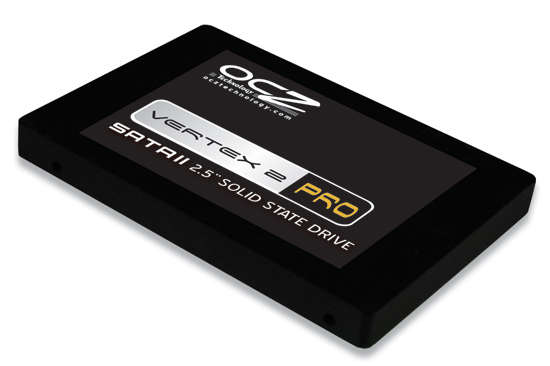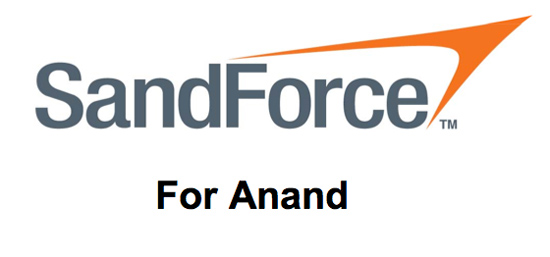OCZ's Vertex 2 Pro Preview: The Fastest MLC SSD We've Ever Tested
by Anand Lal Shimpi on December 31, 2009 12:00 AM EST- Posted in
- Storage
One thing AMD has taught me is that you can never beat Intel at its own game. Simply trying to do what Intel does will leave you confined to whatever low margin market Intel deems too unattractive to pursue. It’s exactly why AMD’s most successful CPU architectures are those that implement features that Intel doesn’t have today, but perhaps will have in a few years. Competing isn’t enough, you must innovate. Trying to approach the same problem in the same way but somehow do it better doesn’t work well when your competition makes $9B a quarter.
We saw this in the SSD space as well. In the year since Intel’s X25-M arrived, the best we’ve seen is a controller that can sort-of do what Intel’s can just at a cheaper price. Even then, the cost savings aren’t that great because Intel gets great NAND pricing. We need companies like Indilinx to put cost pressure on Intel, but we also need the equivalent of an AMD. A company that can put technological pressure on Intel.

That company, at least today, is SandForce. And its disciple? OCZ. Yep, they’re back.
Why I Hate New SSDs
I’ll admit, I haven’t really been looking forward to this day. Around the time when OCZ and Indilinx finally got their controller and firmware to acceptable levels, OCZ CMO Alex Mei dropped a bombshell on me - OCZ’s Vertex 2 would use a new controller by a company I’d never heard of. Great.
You may remember my back and forth with OCZ CEO Ryan Petersen about the first incarnation of the Vertex drive before it was released. Needless to say, what I wrote in the SSD Anthology was an abridged (and nicer) version of the back and forth that went on in the months prior to that product launch. After the whole JMicron fiasco, I don’t trust these SSD makers or controller manufacturers to deliver products that are actually good.

Aw, sweet. You'd never hurt me would you?
Which means that I’ve got to approach every new drive and every new controller with the assumption that it’s either going to somehow suck, or lose your data. And I need to figure out how. Synonyms for daunting should be popping into your heads now.
Ultimately, the task of putting these drives to the test falls on the heads of you all - the early adopters. It’s only after we collectively put these drives through hundreds and thousands of hours of real world usage that we can determine whether or not they’re sponge-worthy. Even Intel managed to screw up two firmware releases and they do more in-house validation than any company I’ve ever worked with. The bugs of course never appeared in my testing, but only in the field in the hands of paying customers. I hate that it has to be this way, but we live in the wild west of solid state storage. It’ll be a while before you can embrace any new product with confidence.
And it only gets more complicated from here on out. The old JMicron drives were easy to cast aside. They behaved like jerks when you tried to use them. Now the true difference between SSDs rears its head after months or years of use.
I say that because unlike my first experience with OCZ’s Vertex, the Vertex 2 did not disappoint. Or to put it more directly: it’s the first drive I’ve seen that’s actually better than Intel’s X25-M G2.
If you haven't read any of our previous SSD articles, I'd suggest brushing up on The Relapse before moving on. The background will help.










100 Comments
View All Comments
Wwhat - Wednesday, January 6, 2010 - link
You make a good point, and anand seems to deliberately deflect thinking about it, now you must wonder why.Anyway don't be disheartened, your point is good regardless of this support of 'magic' that anad seems to prefer over an intellectual approach.
Shining Arcanine - Thursday, December 31, 2009 - link
As far as I can tell from Anand's description of the technology, it seems that this is being done transparently to the operating system, so while the operating system thinks that 25GB have been written, the SSD knows that it only wrote 11GB. Think of it of having two balancing sheets, one that other people see that has nice figures and the other that you see which has the real figures, sort of like what Enron did, except instead of showing the better figures to everyone else when the actual figures are worse, you show the worse figures to everyone else when the actual figures are better.Anand Lal Shimpi - Thursday, December 31, 2009 - link
Data compression, deduplication, etc... are all apparently picked and used on the fly. SandForce says it's not any one algorithm but a combination of optimizations.Take care,
Anand
AbRASiON - Friday, January 1, 2010 - link
What about data reliability, compressed data can normally be a bit of an issue recovering it - any thoughts?Jenoin - Thursday, December 31, 2009 - link
Could you please post actual disk capacity used for the windows 7 and office install?The "size" vs "size on disk" of all the folders/files on the drive, (listed by windows in the properties context tab) would be interesting, to see what level of compression there is.
Thanks
Anand Lal Shimpi - Thursday, December 31, 2009 - link
Reported capacity does not change. You don't physically get more space with DuraWrite, you just avoid wasting flash erase cycles.The only way to see that 25GB of installs results in 11GB of writes is to query the controller or flash memory directly. To the end user, it looks like you just wrote 25GB of data to the drive.
Take care,
Anand
notty22 - Thursday, December 31, 2009 - link
It would be nice for the customer if OCZ did not produce multiple models with varying degrees of quality . Whether its the controller or memory , or combination thereof.
Go to Newegg glance at OCZ 60 gig ssd and greeted with this.
OCZ Agility Series OCZSSD2-1AGT60G
OCZ Core Series V2 OCZSSD2-2C60G
OCZ Vertex Series OCZSSD2-1VTX60G
OCZ Vertex OCZSSD2-1VTXA60G
OCZ Vertex Turbo OCZSSD2-1VTXT60G
OCZ Vertex EX OCZSSD2-1VTXEX60G
OCZ Solid Series OCZSSD2-1SLD60G
OCZ Summit OCZSSD2-1SUM60G
OCZ Agility EX Series OCZSSD2-1AGTEX60G
219.00 - 409.00
Low to high the way I listed them.
I can understand when some say they will wait until the
manufactures work out all the various bugs/negatives that must
be inherent in all these model/name changes.
Which model gets future technical upgrades/support ?
jpiszcz - Thursday, December 31, 2009 - link
I agree with you on that one.What we need is an SSD that beats the X25-E, so far, there is none.
BTW-- is anyone here running X25-E on enterprise severs with > 100GB/day? If so, what kind of failure rates are seen?
Lonyo - Thursday, December 31, 2009 - link
I like the idea.Given the current state of the market, their product is pretty suitable when it comes to end user patterns.
SSDs are just too expensive for mass storage, so traditional large capacity mechanical drives make more sense for your film or TV or music collection (all of which are likely to be compressed), which all the non-compressed stuff goes on your SSD for fast access.
It's god sound thinking behind it for a performance drive, although in the long run I'm not so sure the approach would always be particularly useful in a consumer oriented drive.
dagamer34 - Thursday, December 31, 2009 - link
At least for now, consumer-oriented drives aren't where the money is. Until you get 160GB drives down to $100, most consumers will call SSDs too expensive for laptop use.The nice thing about desktops though is multiple slots. 80GB is all what most people need to install an OS, a few programs, and games. Media should be stored on a separate platter-based drive anyway (or even a centralized server).